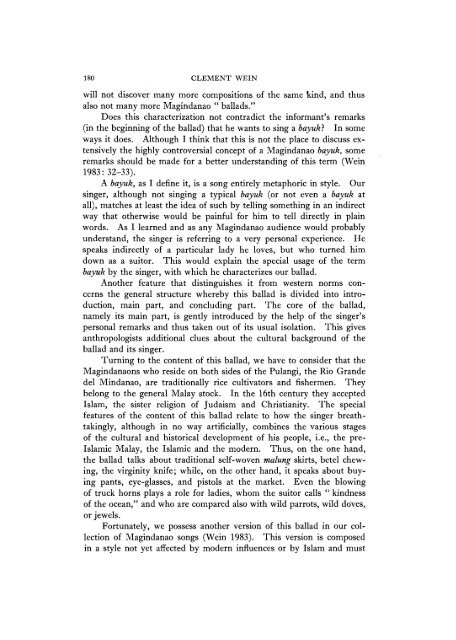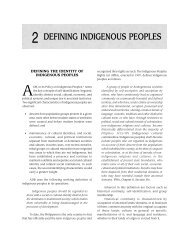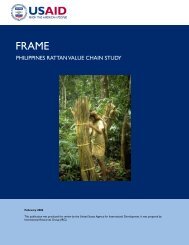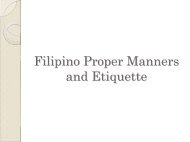Create successful ePaper yourself
Turn your PDF publications into a flip-book with our unique Google optimized e-Paper software.
180 CLEMENT WEINwill not discover many more compositions of the same kind, and thusalso not many more Magindanao " ballads."Does this characterization not contradict the informant's remarks(in the beginning of the ballad) that he wants to sing a bayuk? In someways it does. Although I think that this is not the place to discuss extensivelythe highly controversial concept of a Magindanao bayuk, someremarks should be made for a better understanding of this term (Wein1983 : 32-33).A bayuk, as I define it, is a song entirely metaphoric in style. Oursinger, although not singing a typical bayuk (or not even a bayuk atall), matches at least the idea of such by telling something in an indirectway that otherwise would be painful for him to tell directly in plainwords. As I learned and as any Magindanao audience would probablyunderstand, the singer is referring to a very personal experience. Hespeaks indirectly of a particular lady he loves, but who turned himdown as a suitor. This would explain the special usage of the termbayuk by the singer, with which he characterizes our ballad.Another feature that distinguishes it from western norms concernsthe general structure whereby this ballad is divided into introduction,main part, and concluding part. The core of the ballad,namely its main part, is gently introduced by the help of the singer'spersonal remarks and thus taken out of its usual isolation. This givesanthropologists additional clues about the cultural background of theballad and its singer.Turning to the content of this ballad, we have to consider that theMagindanaons who reside on both sides of the Pulangi, the Rio Grandedel Mindanao, are traditionally rice cultivators and iishermen. Theybelong to the general Malay stock. In the 16th century they acceptedIslam, the sister religion of Judaism and Christianity. The specialfeatures of the content of this ballad relate to how the singer breathtakingly,although in no way artificially, corrtbines the various stagesof the cultural and historical development of his people, i.e., the pre-Islamic Malay, the Islamic and the modern. Thus, on the one hand,the ballad talks about traditional self-woven malung skirts, betel chewing,the virginity knife; while, on the other hand, it speaks about buyingpants, eye-glasses, and pistols at the market. Even the blowingof truck horns plays a role for ladies, whom the suitor calls " kindnessof the ocean," and who are compared also with wild parrots, wild doves,or jewels.Fortunately, we possess another version of this ballad in our collectionof Magindanao songs (Wein 1983). This version is composedin a style not yet affected by modern influences or by Islam and must
















